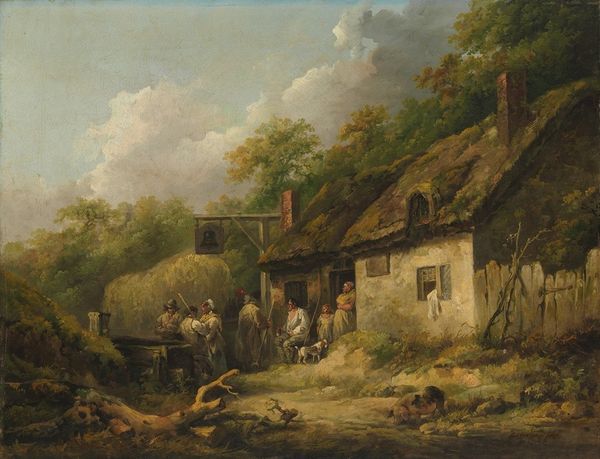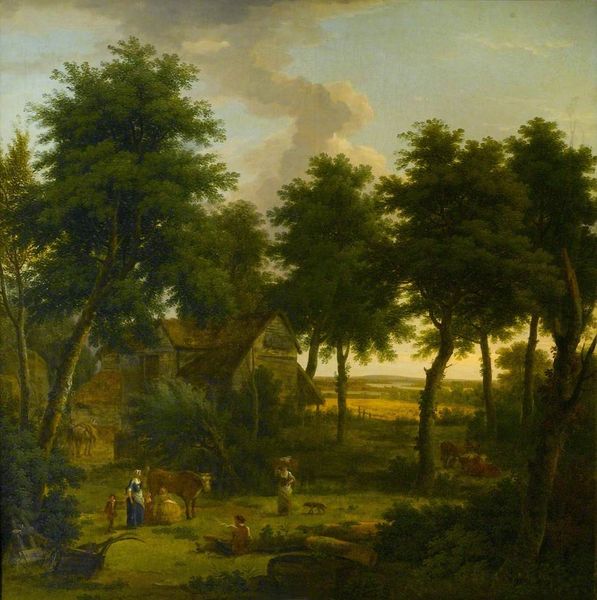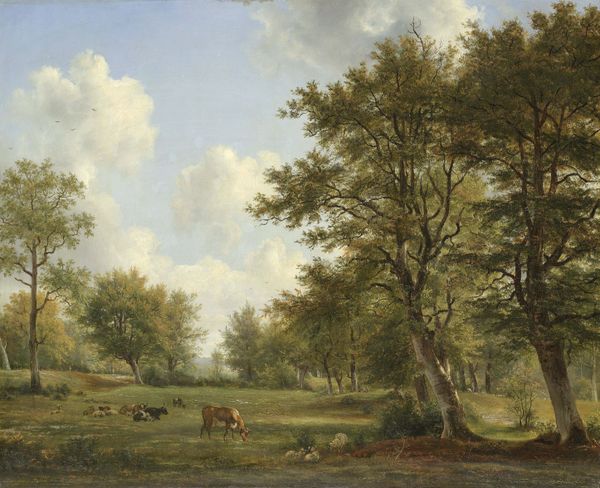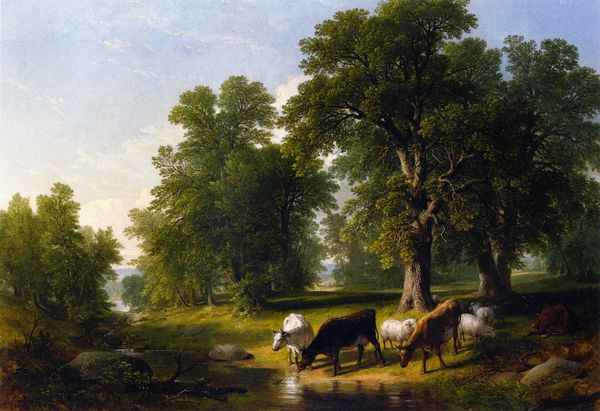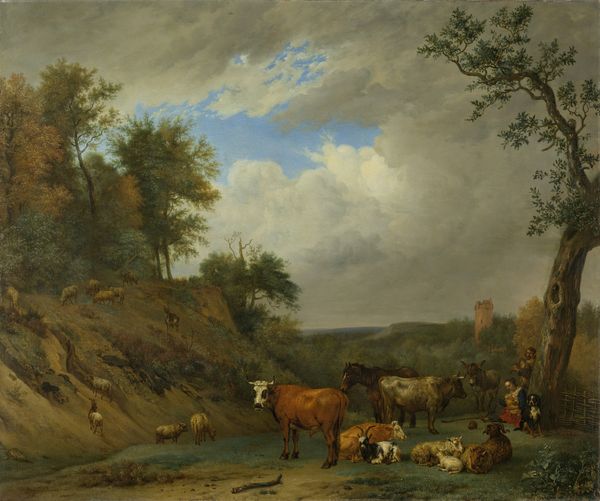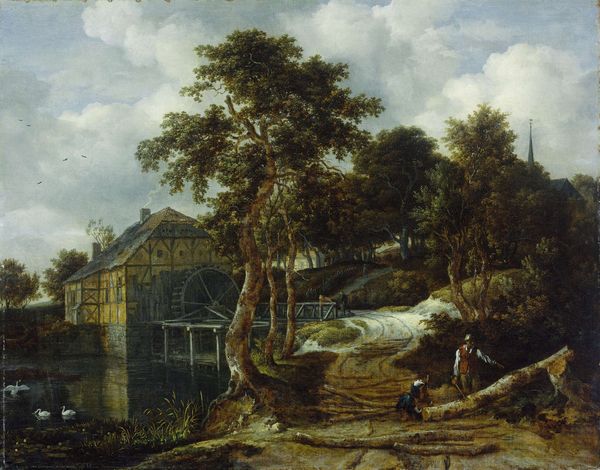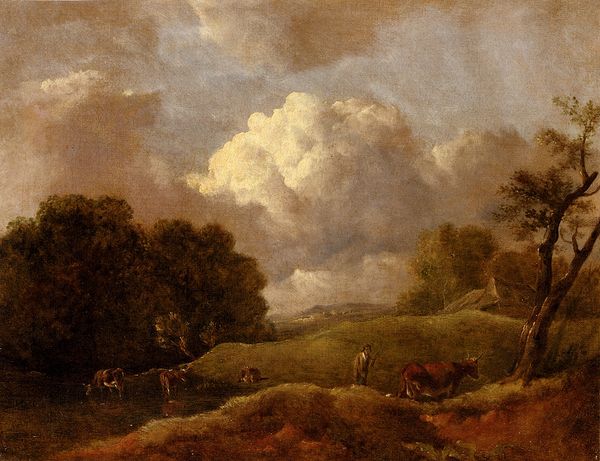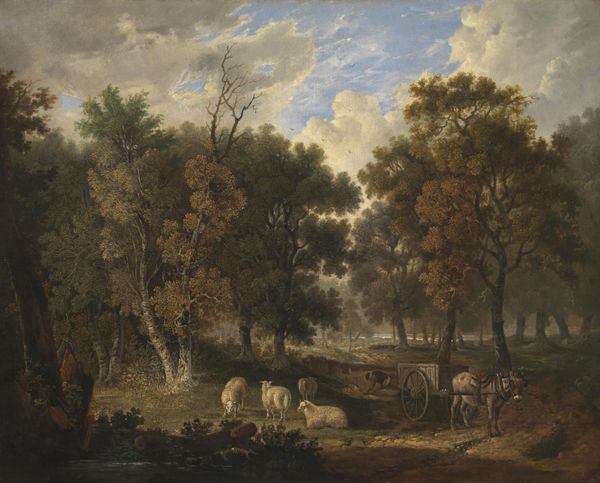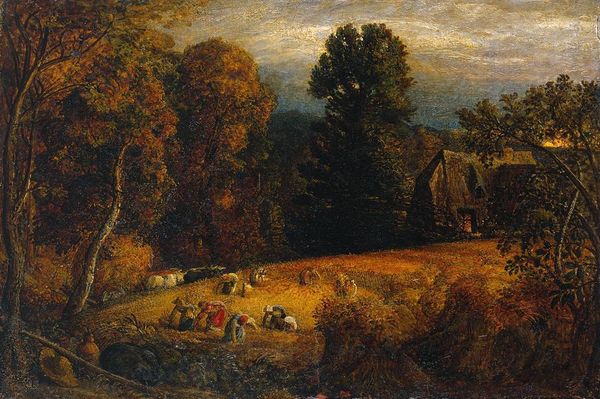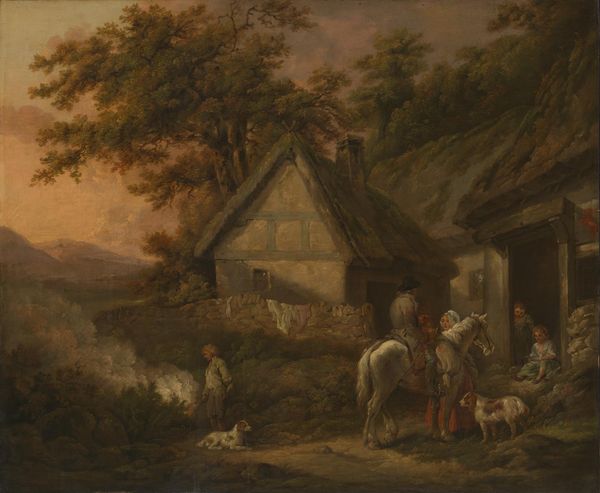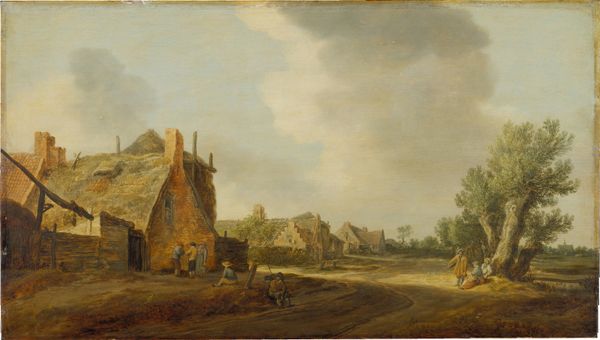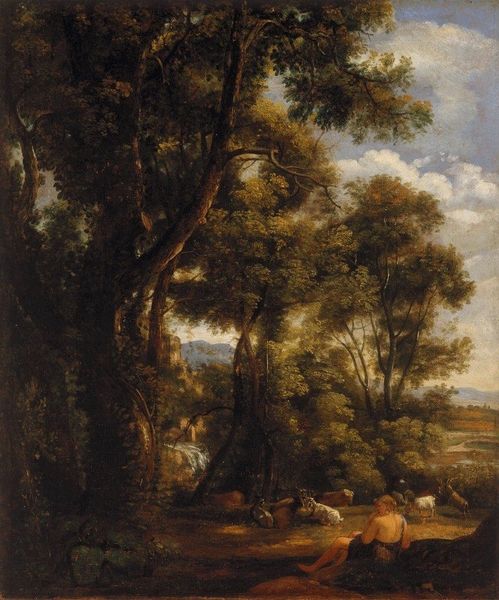
Milking Time - Study of a Farm-Yard near Canterbury Possibly 1833 - 1834
0:00
0:00
Dimensions: support: 965 x 1333 mm
Copyright: CC-BY-NC-ND 4.0 DEED, Photo: Tate
Curator: Thomas Sidney Cooper's pastoral scene, "Milking Time - Study of a Farm-Yard near Canterbury," depicts an idyllic English farm. The support measures 965 x 1333 mm, and it is held in the Tate Collections. Editor: It's a very calming composition, isn't it? The animals seem to be arranged almost like a still life. Curator: Cooper's popular reputation rested on his ability to realistically depict livestock. The composition invites us to consider the Victorian era's romanticized view of rural life, but at what cost? Editor: Ah, but the light! See how the warmth radiating from the leaves and figures lends a symbolic harmony, suggesting the cyclical rhythms of nature and agrarian life? Curator: Perhaps. But Cooper was also canny. His depictions of rural England reinforced sentimental notions of agrarian life during a period of rapid industrial change. Editor: I can see that now, but ultimately, despite any socio-political context, this tableau fosters a sense of nostalgia for a simpler way of life. Curator: I concede that there's an undeniable allure in its idealized depiction. It’s a lovely, albeit constructed, world.
Comments
tate 8 months ago
⋮
http://www.tate.org.uk/art/artworks/cooper-milking-time-study-of-a-farm-yard-near-canterbury-n00435
Join the conversation
Join millions of artists and users on Artera today and experience the ultimate creative platform.
tate 8 months ago
⋮
Cooper often painted subjects from the Stour Valley in Kent. Here he depicts Tonford Manor, Thanington, now a suburb of Canterbury. His apparently truthful portrayal of cattle and sheep introduced a new note into English art. His style is modelled on that of the Belgian painter Eugene Verboekhoven (1798–1881), who specialised in cattle pictures modelled on Dutch 17th-century masters such as Paulus Potter (1620–91) and Aelbert Cuyp (1620–1691). These artists were much in vogue among British collectors of the time, and Cooper was sometimes called the English ‘Paul Potter’. Gallery label, February 2016

